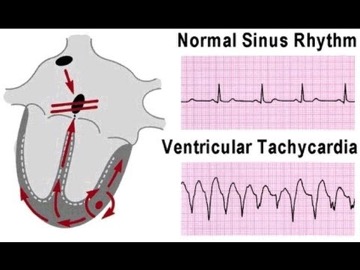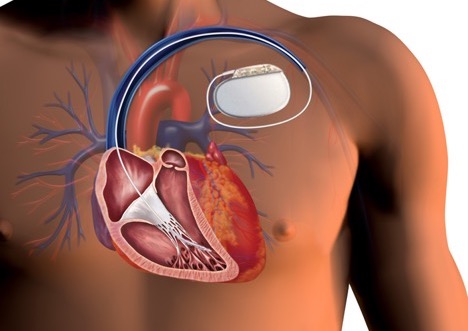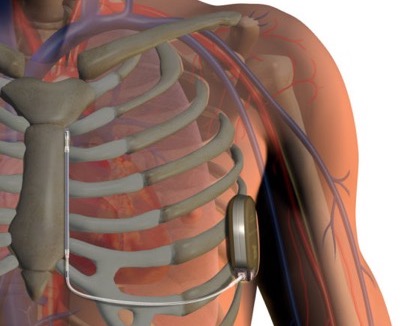Ventricular Tachycardia (VT)
 VT is an abnormal rhythm of the bottom chambers of the heart or ventricles. Can occur in people with otherwise normal heart (no previous heart attack, scar or heart pump failure), or more commonly in patient with previous heart disease.
VT is an abnormal rhythm of the bottom chambers of the heart or ventricles. Can occur in people with otherwise normal heart (no previous heart attack, scar or heart pump failure), or more commonly in patient with previous heart disease.
VT With Heart Disease
The most common cause of VT in people with abnormal heart structure is previous heart attack, previous heart surgery to correct mechanical issues of the heart, or heart failure (weak heart pump). The electrical short-circuit is located in the ventricle, where an area of scar serves as a barrier for the electrical circuit to spin around it causing a typically fast and often poorly tolerated heart rhythm.
Symptoms are various, but most commonly palpitations, severe lightheadedness and transient loss of consciousness. It is imperative the prompt restoration of normal rhythm as this serious rhythm may result in blood pressure collapse and in some instances sudden death if not treated promptly.

To prevent VT resulting in collapse and death, people with abnormal heart structure due to any of the conditions mentioned above should receive and implantable cardiac defibrillator (ICD).
An ICD is a metallic device with a computer system, a battery and a charge capacitor that in response to identifying a life-threatening VT can promptly treat the person with rapid pacing to overdrive and terminate the VT or if needed with a high energy shock impulse that very effectively restores the normal heart rhythm. These devices have proven to improve survival in patient with abnormal heart function with or without presenting previous VT.
The ICD can be implanted with a safe procedure under intravenous sedatives and local anesthesia to the surgical site. Patient sometimes can be discharged the same day of the ICD implantation after several hours of observation, but most commonly stay overnight for monitoring.
 The traditional ICD uses a lead (wire) that goes to the hear via the vein under the clavicle (collar bone). Although a safe and effective procedure patient are left with one or more wires inside the veins and heart that could lead to future issues.
The traditional ICD uses a lead (wire) that goes to the hear via the vein under the clavicle (collar bone). Although a safe and effective procedure patient are left with one or more wires inside the veins and heart that could lead to future issues.
More recently technological advances allow the team at GVMC to implant ICD’s solely under the skin (subcutaneous ICD), with no wires inside the veins or heart. This SubQ ICD has similar effectiveness terminating VT, however not all patient will qualify to benefit from it.
Catheter Ablation For VT
When medication are not enough to control the occurrence of ventricular tachycardia resulting in frequent symptoms such as palpitations, passing out or requiring frequent ICD shocks, catheter ablation is an effective options.
This procedure is intended to eliminate the heart tissue that serve as electrical shortcircuit responsible for allowing the VT to occur. Typically, VT catheter ablation with the presence of scar tissue in the heart is performed under general anesthesia. Catheters are placed in the groin vessels (veins and artery).
The procedure may take several hours and patients most commonly stay one night at HCA Florida Mercy Hospital for monitoring after the ablation. The procedure is highly successful controlling the VT and very frequently eliminating its re-appearance.
If you or one of your loved ones suffer from VT or frequent ICD shock you may benefit from a VT ablation.
